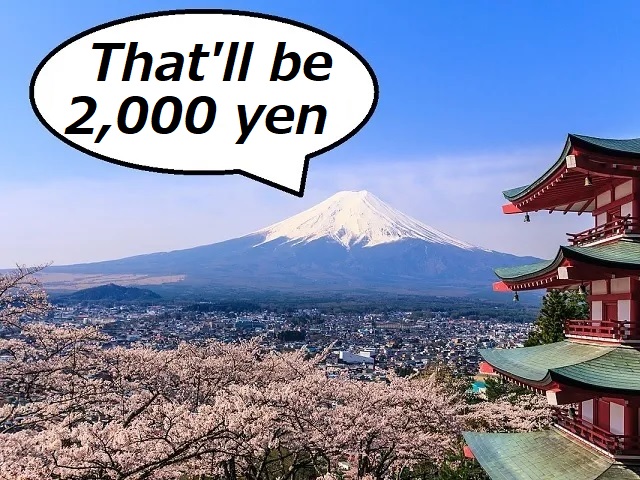
Local government plan would aim to prevent crowding and “bullet climbing.”
The Yoshida Trail is the most popular path to the summit of Mt. Fuji. According to the Ministry of the Environment, out of all the people who hiked to the top of Japan’s tallest mountain, about 60 percent of them took the Yoshida Trail to get there.
When the next climbing season rolls around, though, the Yoshida Trail may be picking up another distinction by becoming the most expensive route to the top of Fuji. Multiple media organizations in Japan are reporting that the government of Yamanashi Prefecture, in which the Yoshida Trail lies, is looking to introduce a toll of 2,000 yen (US$13.80) to hike the path, which begins at the Fuji Subaru Line 5th Station, where paved roads up the mountain end. This mandatory toll would be in addition to the requested but voluntary 1,000-yen conservation fee that hikers on the trail are already asked to pay.
The toll would be charged on a per-person basis, and to enforce payment a gate would be constructed at the start of the trail. This gate would be shut from 4 p.m. to 3 a.m., with the possibility of the closure happening earlier if the trail has already exceeded 4,000 hikers for the day.
The goal of the plan, the cited but unidentified sources say, is to stem overcrowding on the trail and to prevent “bullet climbing.” Starting with the first of those, statistics show that during the Mt. Fuji climbing season last summer, roughly 221,000 made the trek to the top, representing a return to pre-pandemic levels. With Japan experiencing both a boom in inbound overseas tourism and increased interest in outdoor activities among locals, that number isn’t likely to come down very much anytime soon, and during the most congested times the path can look like an amusement park line.
As for “bullet climbing,” or dangan tozan, as it’s called in Japanese, it’s a term used to describe when hikers start their ascent up the trail at night, allowing them to time their arrival at the top just as the sun is coming up, considered the most beautiful time of day at the summit, and then make their way back down in the morning without spending a night in one of the mountain lodges along the trail. While bullet climbing is a time and cost-effective way to hike to the top of Fuji, critical officials assert that it’s a dangerous choice, as not only is the trail being hiked in darkness on the way up, the shorter time spent on the mountain means less time for the body to acclimate to the thinner air at higher altitudes.
Speaking of the mountain lodges operated on Mt. Fuji, a provision of the plan would exempt those who are paying to stay at a lodge from the Yoshida Trail toll and time restrictions.
The vast majority of Japan’s hiking trails do not charge any sort of admission or access fee. Helping pave the way for the new plan is the fact that the Yoshida Trail is technically part of the prefectural road network, giving the Yamanashi Prefectural government jurisdiction to levy tolls without having to clear the plan with national-level governmental organizations.
The toll/gate proposal is expected to be formally introduced to the Yamanashi prefectural assembly sometime this month, and if passed will most likely be in effect by the time Mt. Fuji opens to hikers in July.
Source: Jiji via Livedoor News via Jin, Yomiuri Shimbun, Sankei Shimbun
Top image: Wikipedia/Gryffindor (edited by SoraNews24)
● Want to hear about SoraNews24’s latest articles as soon as they’re published? Follow us on Facebook and Twitter!